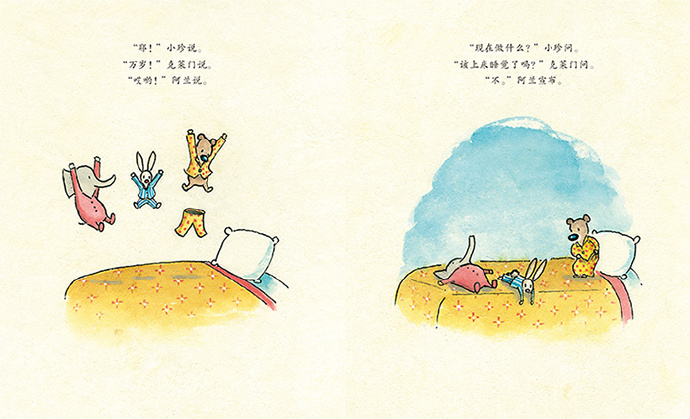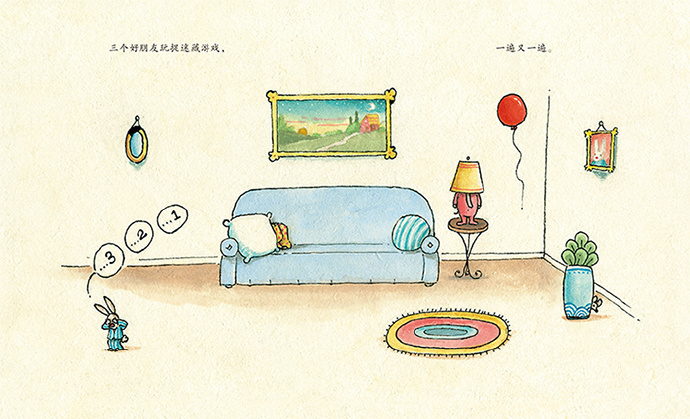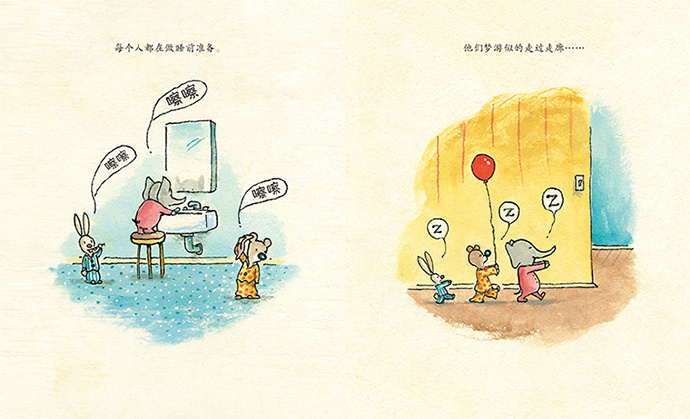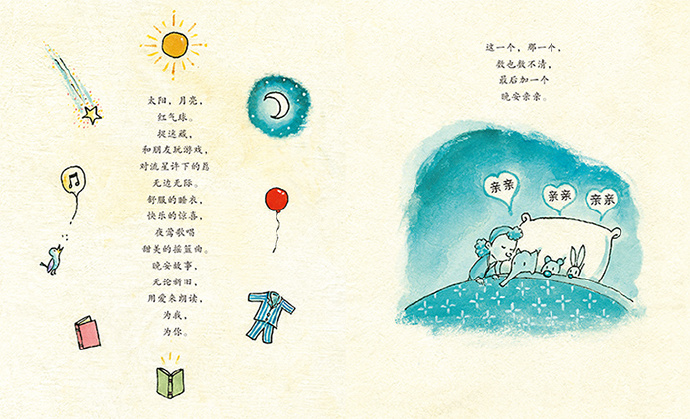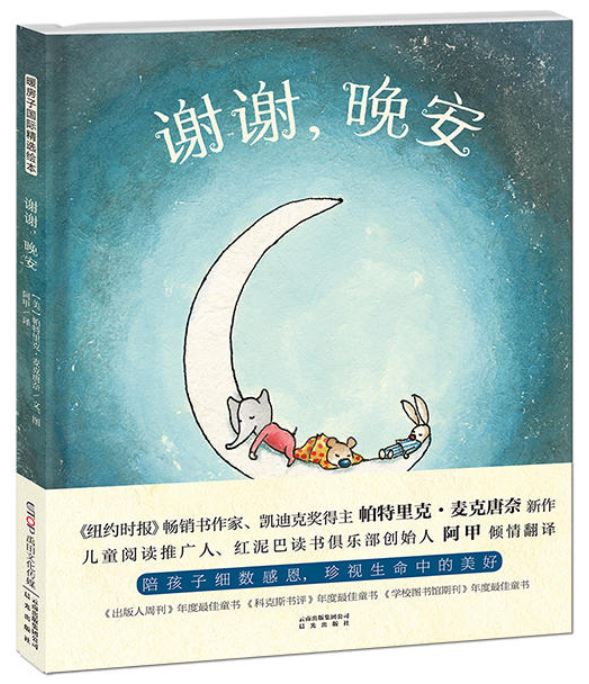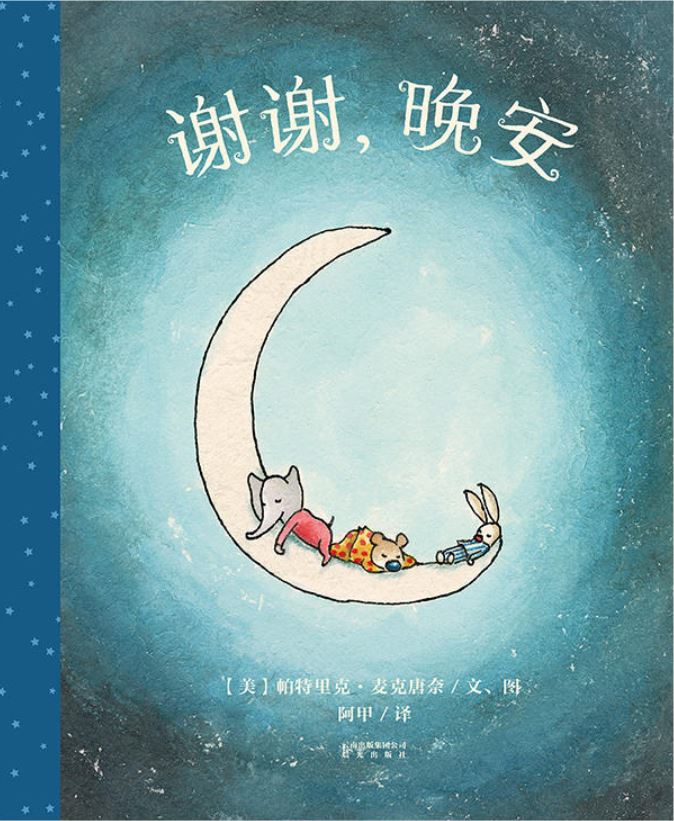
“Thank You, Goodnight” is a new picture book published in 2015 by American cartoonist Patrick McDonnell. He is renowned in the comics field for his work on MUTTS; he is also a passionate animal protection activist and a deeply compassionate philanthropist. He and his wife, Karen, do not have children, but he presumably loves them dearly. Since 2005, he has experimented with creating picture books for children, achieving considerable success in this field. In 2012, he won the Caldecott Medal for “I… Have a Dream.” Throughout McDonnell’s picture books, he consistently conveys messages of love, courage, and dreams. “Thank You, Goodnight” is no exception, but it also serves a unique purpose: to help children fall asleep peacefully.
There are already many “goodnight books” for children on the market. What’s so special about “Thank You, Goodnight”? Can it truly help children (and adults, by the way?)? This begins with the classic “Goodnight, Moon.” Margaret Wise Brown and Clement Hurd published the book in 1947. Initially, most adult readers didn’t fully grasp its value. The story consists of a large green bedroom, where the furnishings are meticulously inventoried, followed by a story about a little bunny saying goodnight to everything, and finally falling asleep—it’s a story too simple! Ask the children if they enjoy the story, but they often fall asleep while listening! It seems like they haven’t really reacted. Simply put, adults often overlook a child’s most natural reaction—the peaceful sleep phase—and take it for granted. When these children grew up and had their own children, they wanted to look for the goodnight magic book they had when they were young that could make their children fall asleep while listening to it. It was then that they rediscovered “Goodnight Moon”.
Researchers have since begun to delve into the origins of this “goodnight magic.” It turns out these books have a direct connection to young children’s hearts, soothing their restless sleep. For example, despite the simple text, these books possess a remarkably rhythmic flow, a rhythm reminiscent of a lullaby: fragmented, repetitive, lingering, and long. The images themselves appear simple, yet imbued with both childish and artistic interest, and the soft tones and contours create a sense of comfort and a desire for a good night’s sleep. The narrative is also meticulously crafted. Rather than simply narrating the story or simply settling into a quiet goodnight mood, it first creates a bit of excitement, allowing young readers to vent. “Goodnight, Moon” begins by counting the items in the room (like a wealthy man), and then invites a little bunny to patiently say goodnight to each one. As the bunny begins, it even stands up from its bed, excited. Clement, the little character in “Thank You, Goodnight,” is also a rabbit. Notice how he’s wearing the same blue and white striped pajamas as the bunny in “Goodnight Moon”! This is clearly a nod to both of McDonnell’s predecessors. However, McDonnell’s bunny has a “slumber party” with two friends, having a good time before getting ready for bed.
The greatest secret of the “Goodnight Magic” lies in the second half of the book. The “magic” of “Goodnight, Moon” lies, at its core, in its understanding of a unique psychological state in infancy and early childhood: children at a certain stage cannot yet grasp the permanence of objects. Objects no longer in sight seem to have vanished from their universe! This can be unsettling, causing them to struggle to fall asleep. The author invites children (with the help of the book’s little rabbit) to count the most familiar and cherished objects around them, then say goodnight to each one. While seemingly settling these objects, it actually soothes the child’s heart. Once they have said goodnight to the sky, the stars, and all the sounds, they can finally drift off to sleep.
While paying homage to its predecessors, “Thank You, Goodnight” also attempts to elevate the magic: the three little ones insist on hearing a story before falling asleep, and they insist on hearing their favorite story. For children, their favorite stories are often those in which they become the protagonist. Here, the images reveal another secret: the elephant in this book is likely “Babel the Elephant,” and the bear is “Winnie-the-Pooh Bear”! — Of course, you can just take this as a possible interpretation. After listening to the story, they do the same thing as the bunny in “Goodnight, Moon,” but instead of just saying “goodnight,” they add a real “goodnight kiss” and a “thank you” — falling asleep filled with warmth and gratitude! What a sweet goodnight ritual!
But wait! There’s more to the story.
On goodreads.com, a website frequented by foreign readers, there are over 800 reviews of this book. While the majority are praising, there are also some disagreements. The main disagreements are that the book is too sweet, and that the story’s character, Maggie, seems a bit puzzling: Why is she caring for the three little ones like a mother or a nanny, when she herself is a child? This latter observation is truly fascinating, and even more interesting, I haven’t found a single review addressing it. It’s possible that everyone has overlooked the book’s greatest secret: the true protagonist isn’t the three little ones, but Maggie!
The secret lies on the last page: Maggie lies asleep in bed, with three little creatures beside her. But please note: in this painting, the three little creatures are no longer living creatures; they are actually Maggie’s toys! To ensure this, the artist has Maggie take the toy rabbits out of the covers. All the bedtime activities we’ve seen so far are simply a play Maggie has written, directed, and performed herself. This is Maggie’s bedtime ritual!
So who helped Maggie accomplish all this, especially reading and telling her stories? Of course, it was Maggie’s parents, who were not in the picture but seemed to be everywhere.
I think this is the most reassuring secret of this story.
Written in Beijing on October 15, 2016
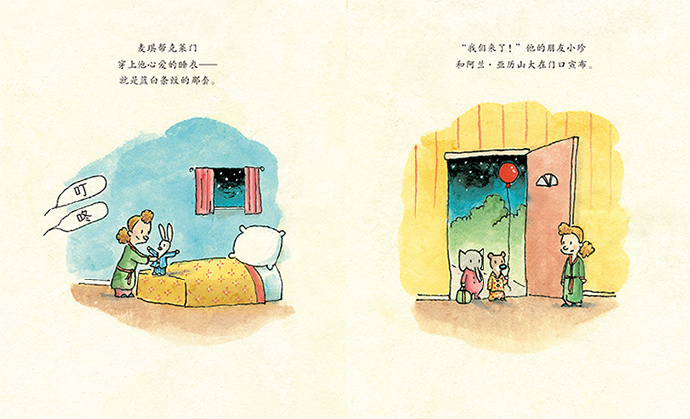
The Secret of Goodnight: My Thoughts on the Translation of “Thank You, Goodnight”

